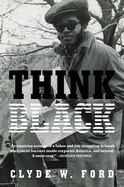
Clyde W. Ford struts to his first day at IBM with "a ballooned Afro, pork chop sideburns, [and] a blue zoot suit with red pinstripes," knowing only shades of the legacy he carries. In 1971, more than two decades after his father's hiring as IBM's first black systems engineer, Clyde, 19, is told he "doesn't get it"--"it" being the IBM way of a dark suit and tie, button-down shirt and matching attitude.
As Clyde digs into his father's experience, he gains fuller understanding of John Ford's path and the burdens of treading it. In Think Black, Ford winds through their lives and the corporate behemoth that influenced them. Being first carries risks, and John felt the pressures of representing his race in the face of racial codes, false diversity, sabotage and working harder for less pay. He brought change to IBM at a cost, deepening his "wound of color."
Ford illuminates the profound interaction between technology and race. A progression of machines and coding (Ford learned at a young age from his father--"For a ten-year-old, deriving 1,008 decimals from 1760 octal is no easy feat") parallels IBM's sinister history in the service of racial purity and oppression.
The Fords did not take the same path in answer to the question of who they were as black men in a society that resents their very being. In Think Black, Ford shares a peace his father never found, and food for thought for a country that hasn't come nearly as far as they did. --Lauren O'Brien of Malcolm Avenue Review

